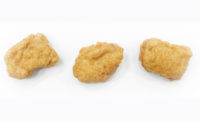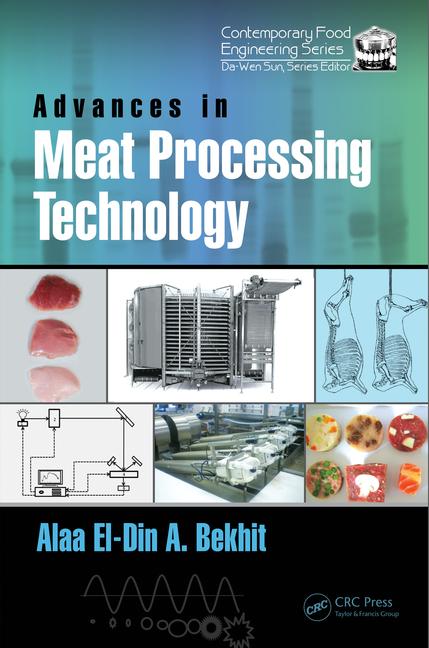Although forming equipment is a key element in developing such items as chicken nuggets and strips and hamburger patties, it alone cannot produce quality products.
Without also leveraging the proper raw materials, operating processes and ingredients, plants with even the most cutting-edge machines will likely produce substandard items.
Substances that act as binders to create more cohesive meats for formulation also play an essential role in product taste and texture. Such materials include salt, carrageenan, starches, phosphates and citrus fibers, says Allan Samson, president of ESCA Enterprises Inc., a Glen Mills, Pa.-based development firm that creates and engineers food products. Carbon dioxide, meanwhile, is an important component for lowering meat temperature to better enable the molding of items.
“Temperature will affect product consistency,” Samson says. “[Equipment] will create a softer or sloppy shape if the meat is too warm.”
Also affecting consistency is the length of time and the speed that meat and poultry mix with ingredients prior to formulation, as well as the amount of salt in the mixture.
A challenge for operators, Samson notes, is adding the right amount of salt to maximize protein extraction — which helps maintain product size and shape — while still appealing to consumers who are looking to minimize salt intake.
Product developers can help compensate for lower salt levels — and the subsequent reduction in cohesion — by increasing blending and mixing times, he says.
Parts of a puzzle
Determining the optimal volume and types of additives necessary for each item along with the most favorable mixing parameters and temperatures can require trial and error.
“There are many variables that must interact to successfully create products,” Samson says. “That includes having the proper meat, temperature, ingredients and machine settings.”
Technological specifications, such as the speed of a production line, will vary in accordance with the type of item being formed. Equipment that operates too fast during the creation of beef patties, for instance, may not leverage the proper amount of meat.
“Such a patty may end up resembling a deformed crescent moon instead of having a round shape,” Samson says.
Another major variable is the amount of pressure on meat and poultry during forming.
Because traditional high-pressure systems often overwork proteins, resulting in softer and often mushy items, low- and no-pressure technologies will become prevalent, says Brent Cator, president and owner of Cardinal Meat Specialists Ltd., a Brampton, Ont.-based producer of value-added beef, chicken and pork.
Cardinal is using no-pressure technologies to formulate such items as beef burgers, chicken burgers and stuffed patties, as well as fully cooked chicken breast, sausage, pork steak and meatloaf. The company is developing premium patties containing Certified Angus Beef-branded meat under its proprietary Natural Texture Forming process.
The process enables burgers to be cooked at 160 degrees to ensure a safe product and is intended to keep the burgers moist and juicy and to be prepared in half the time of similar-size hand-formed burgers, which leads to more even cooking, Cator notes.
“There is no single technology that creates outstanding benefits,” he says. “It is the integrated steps that are important.”
That includes ensuring machine blades are sharp; formulation equipment is set to the proper speeds, temperatures and pressures; and that raw proteins are of consistent quality, Cator says.
“Operators need to control a multitude of little elements,” he adds.
An array of potential problems
Though technology plays a large role in determining product quality, equipment usually is not the primary cause of production issues, says Jeff Sindelar, associate professor and extension meat specialist in the department of animal sciences at the University of Wisconsin-Madison.
“Problems typically originate further upstream when plants do not prepare products correctly,” he says. “Operators may not have the proper formulations and ingredients or are not following the right operating processes to enable the equipment to do the job.”
Those processes govern cooking temperatures, which can affect the dimension of the proteins and whether final products contain air pockets, he says.
“Meats with varying thicknesses can change in shape and size if operators do not maintain proper heat controls,” Sindelar says.
Adjustments to such processes should be made in accordance with the unique characteristics of each item, he says.
“While it is important to have the right temperature for good forming, operators also should be ready to add ingredients, such as starch and other non-meat proteins, to help firm or bind the product or create bulk when necessary,” Sindelar says. “Meat and poultry that are too soft are less likely to maintain their configurations.” NP











